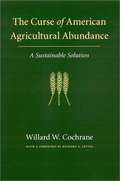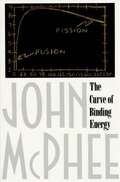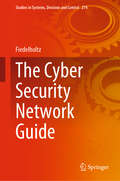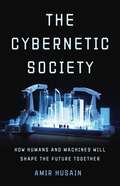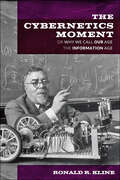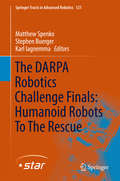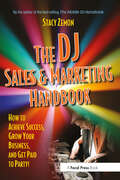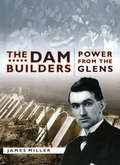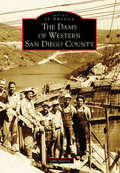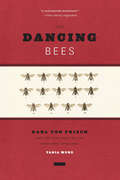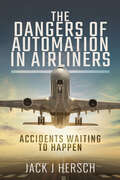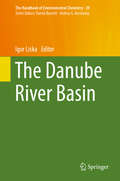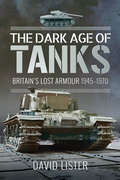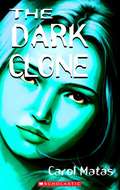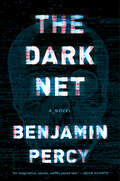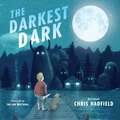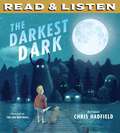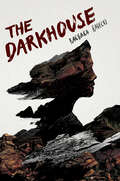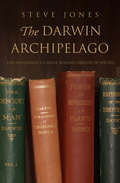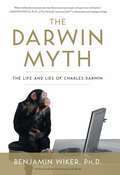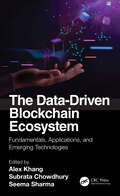- Table View
- List View
The Curse Of American Agricultural Abundance: A Sustainable Solution (Our Sustainable Future Ser. #16)
by Willard W. Cochrane Richard A. Levins Willard CochraneAdvisor to President Kennedy, consultant for foreign governments, and spokesman for family farmers everywhere, Willard W. Cochrane has been a leading expert on agriculture and its problems in the United States since the 1940s. In his straightforward style Cochrane analyzes the propensity for American agriculture to produce too much and the inability of our social and economic system to make effective use of that unending abundance. He then offers his vision for American agriculture in the twenty-first century. Cochrane looks at two periods in agricultural history: 195366 and 19972002. Structurally, technologically, and organizationally the two periods are as different as night and day, but in terms of the big economic picture--too much production pressing on a limited commercial demand with resulting low farm prices and incomes--they are mirror images of each other. With this understanding, Cochrane argues that Americans no longer need to farm fragile ecosystems with intensive chemical methods, make huge payments that result in fewer farms and higher farming costs, nor bear the environmental consequences of all-out production. Instead, he outlines a bold new strategy in which we can enjoy our abundance and focus our efforts on quality of life and protecting the environment in our rural areas. Willard W. Cochrane is the author of numerous books, including The Development of American Agriculture: A Historical Analysis, and coauthor of Reforming Farm Policy: Toward a National Agenda. Richard A. Levins is a professor of agricultural economics at the University of Minnesota and the author of Willard Cochrane and the American Family Farm (Nebraska 2003).
The Curve of Binding Energy: A Journey into the Awesome and Alarming World of Theodore B. Taylor
by John McPheeThis is a book about nuclear energy both for electric power production and for bombs. In particular, it focuses on the dangers of a single person or small group obtaining the materials (most likely from some part of the nuclear power production system) to produce a bomb. The level of worry about this possibility come mainly from a particular nuclear physicist, Ted Taylor. But the sources for this book range far and wide over both the history and people involved in both nuclear bomb making and nuclear power production.
The Cutting Edge: A Half Century of U. S. Fighter Aircraft R and D
by Mark A. Lorell Jennifer Gross Erik Moller Elizabeth Giddens Hugh P. LevauxThe proposition that innovation is critical in the cost-effective design and development of successful military aircraft is still subject to some debate. RAND research indicates that innovation is promoted by intense competition among three or more industry competitors. Given the critical policy importance of this issue in the current environment of drastic consolidation of the aerospace defense industry, the authors here examine the history of the major prime contractors in developing jet fighters since World War II. They make use of an extensive RAND database that includes nearly all jet fighters, fighter-attack aircraft, and bombers developed and flown by U.S. industry since 1945, as well as all related prototypes, modifications, upgrades, etc. The report concludes that (1) experience matters, because of the tendency to specialize and thus to develop system-specific expertise; (2) yet the most dramatic innovations and breakthroughs came from secondary or marginal players trying to compete with the industry leaders; and (3) dedicated military R&D conducted or directly funded by the U.S. government has been critical in the development of new higher-performance fighters and bombers.
The Cyber Effect: A Pioneering Cyberpsychologist Explains How Human Behavior Changes Online (Not A Ser.)
by Mary AikenA groundbreaking exploration of how cyberspace is changing the way we think, feel, and behave Mary Aiken is the world's leading expert in forensic cyberpsychology--a discipline that combines psychology, criminology, and technology to investigate the intersection where technology and human behavior meet. In this, her first book, Aiken has created a starting point for all future conversations about how the Internet is shaping development and behavior, societal norms and values, children, safety, security, and our perception of the world. Cyberspace is an environment full of surveillance, but who is looking out for us? The Cyber Effect offers a fascinating and chilling look at a future we can still do something about. Drawing on her own research and extensive experience with law enforcement, Mary Aiken covers a wide range of subjects from the impact of screens on the developing child to the explosion of teen sexting, and the acceleration of compulsive and addictive behaviors online (gaming, shopping, pornography). She examines the escalation of cyberchondria (anxiety produced by self-diagnosing online), cyberstalking, and organized cybercrime in the Deep Web. Aiken provides surprising statistics and incredible-but-true case studies of hidden trends that are shaping our culture and raising troubling questions about where the digital revolution is taking us. The Cyber Effect will upend your assumptions about your online life and forever change the way you think about the technology you, your friends, and family use. Readers will gain a new understanding of the rapid change taking shape around us and come away with critical tools to become part of this very necessary conversation.Advance praise for The Cyber Effect"Just as Rachel Carson launched the modern environmental movement with her Silent Spring, Mary Aiken delivers a deeply disturbing, utterly penetrating, and urgently timed investigation into the perils of the largest unregulated social experiment of our time."--Bob Woodward "Mary Aiken takes us on a fascinating, thought-provoking, and at times scary journey down the rabbit hole to witness how the Internet is changing the human psyche. A must-read for anyone who wants to understand the temptations and tragedies of cyberspace."--John R. Suler, PhD, author of The Psychology of Cyberspace"Drawing on a fascinating and mind-boggling range of research and knowledge, Mary Aiken has written a great, important book that terrifies then consoles by pointing a way forward so that our experience online might not outstrip our common sense. A must-read for this moment in time."--Steven D. Levitt, co-author of the New York Times bestseller Freakonomics"Figuring out how to guide kids in a hyperconnected world is one of the biggest challenges for today's parents. Mary Aiken clearly and calmly separates reality from myth. She clearly lays out the issues we really need to be concerned about and calmly instructs us on how to keep our kids safe and healthy in their digital lives."--Peggy Orenstein, author of the New York Times bestseller Girls & Sex "Having worked with law enforcement groups from INTERPOL and Europol as well as the U.S. government, Aiken knows firsthand how today's digital tools can be exploited by criminals lurking in the Internet's Dark Net."--NewsweekFrom the Hardcover edition.
The Cyber Security Network Guide (Studies in Systems, Decision and Control #274)
by FiedelholtzThis book presents a unique, step-by-step approach for monitoring, detecting, analyzing and mitigating complex network cyber threats. It includes updated processes in response to asymmetric threats, as well as descriptions of the current tools to mitigate cyber threats. Featuring comprehensive computer science material relating to a complete network baseline with the characterization hardware and software configuration, the book also identifies potential emerging cyber threats and the vulnerabilities of the network architecture to provide students with a guide to responding to threats. The book is intended for undergraduate and graduate college students who are unfamiliar with the cyber paradigm and processes in responding to attacks.
The Cybernetic Society: How Humans and Machines Will Shape the Future Together
by Amir Husain"An optimistic, shimmering image of a world where AI operates in service to humankind" (Kirkus) argues that both the major risk and opportunity of AI is that humans and computers have fused, giving AI the ability to shape the future of human affairs Artificial intelligence is inescapable: at home, at work, in politics, and on the battlefield. In The Cybernetic Society, technologist Amir Husain argues that AI hasn&’t simply encroached on everything we do. It has become part of us, and we, it. Humans and intelligent machines, he argues, are enmeshed in a symbiotic hybrid that he calls a &“cybernetic society.&” Husain describes a present and future where AI isn&’t a tool of humans but our equal partner, one where they can realize their own visions of the world. There is great potential and danger: Saudi Arabia&’s Neom—a &“cognitive city&” being built in inhospitable desert—shows how this symbiosis can make life possible where otherwise, it is not. But the profusion of intelligent military drones is making mass destruction possible where otherwise, it is not. As engrossing as it is urgent, The Cybernetic Society offers a new understanding of this revolutionary fusion of machine and mankind, and its profound implications for all our futures. The path ahead is challenging. But Husain shows why we can live harmoniously with our creations.
The Cybernetics Moment: Or Why We Call Our Age the Information Age (New Studies in American Intellectual and Cultural History)
by Ronald R. KlineHow did cybernetics and information theory arise, and how did they come to dominate fields as diverse as engineering, biology, and the social sciences?Winner of the CHOICE Outstanding Academic Title of the Choice ACRLOutstanding Academic Title, ChoiceCybernetics—the science of communication and control as it applies to machines and to humans—originates from efforts during World War II to build automatic antiaircraft systems. Following the war, this science extended beyond military needs to examine all systems that rely on information and feedback, from the level of the cell to that of society. In The Cybernetics Moment, Ronald R. Kline, a senior historian of technology, examines the intellectual and cultural history of cybernetics and information theory, whose language of "information," "feedback," and "control" transformed the idiom of the sciences, hastened the development of information technologies, and laid the conceptual foundation for what we now call the Information Age. Kline argues that, for about twenty years after 1950, the growth of cybernetics and information theory and ever-more-powerful computers produced a utopian information narrative—an enthusiasm for information science that influenced natural scientists, social scientists, engineers, humanists, policymakers, public intellectuals, and journalists, all of whom struggled to come to grips with new relationships between humans and intelligent machines.Kline traces the relationship between the invention of computers and communication systems and the rise, decline, and transformation of cybernetics by analyzing the lives and work of such notables as Norbert Wiener, Claude Shannon, Warren McCulloch, Margaret Mead, Gregory Bateson, and Herbert Simon. Ultimately, he reveals the crucial role played by the cybernetics moment—when cybernetics and information theory were seen as universal sciences—in setting the stage for our current preoccupation with information technologies.
The DARPA Robotics Challenge Finals: Humanoid Robots To The Rescue (Springer Tracts In Advanced Robotics #121)
by Karl Iagnemma Matthew Spenko Stephen BuergerThe DARPA Robotics Challenge was a robotics competition that took place in Pomona, California USA in June 2015. The competition was the culmination of 33 months of demanding work by 23 teams and required humanoid robots to perform challenging locomotion and manipulation tasks in a mock disaster site. The challenge was conceived as a response to the Japanese Fukushima nuclear disaster of March 2011. The Fukushima disaster was seen as an ideal candidate for robotic intervention since the risk of exposure to radiation prevented human responders from accessing the site. This volume, edited by Matthew Spenko, Stephen Buerger, and Karl Iagnemma, includes commentary by the organizers, overall analysis of the results, and documentation of the technical efforts of 15 competing teams. The book provides an important record of the successes and failures involved in the DARPA Robotics Challenge and provides guidance for future needs to be addressed by policy makers, funding agencies, and the robotics research community. Many of the papers in this volume were initially published in a series of special issues of the Journal of Field Robotics. We have proudly collected versions of those papers in this STAR volume.
The DJ Sales and Marketing Handbook: How to Achieve Success, Grow Your Business, and Get Paid to Party!
by Stacy ZemonThe DJ Sales and Marketing Handbook provides a roadmap to maximizing your profits as a disc jockey. It is jam-packed with practical tools, expert tips and cost-effective methods for increasing sales and creating loyal clients. Renowned DJ Stacy Zemon reveals specific ideas, proven techniques and creative approaches to multiplying your income and gaining the competitive edge. Written for both newcomers and experienced professionals, this comprehensive guide and essential reference manual gives you all of the know-how needed to achieve dramatic results. Inside you will find instructive examples and step-by-step guidelines for how to: find a unique market niche; convert prospects into clients; create and implement a marketing plan; get free publicity; make strategic alliances; select the right media; generate leads and referrals; increase client satisfaction... and much, much more."Stacy Zemon is a knowledgeable source on being a pro mobile DJ. She is also a veteran of the industry who has contributed much to its evolution." - Jim Tremayne, DJ Times Magazine"We endorse Stacy Zemon and her mission to provide DJs with educational resources that support their long-term goals, and help them to achieve prosperity." - American Disc Jockey Association
The Dam Builders: Power from the Glens
by James Mark MillerThis history of Scottish hydropower vividly chronicles the mid-20th century public works projects that transformed the Highlands. In the thirty years after the Second World War, the construction projects of the North of Scotland Hydro-Electric Board changed the face of the Highlands. They brought electricity to nearly every region north of the Highland Line. Founded by Scotland&’s idealistic Secretary of State Tom Johnston, these epic projects of hard labor in beautiful landscapes gave hope to Highland communities. By the time the last scheme was opened in Foyers in 1975, the engineers had built some fifty major dams and power stations, almost 200 miles of tunnel, 400 miles of road, and over 20,000 miles of power line. The Board had to overcome adverse weather and difficult terrain, as well as political opposition. The Dam Builders is a vivid account of these historic projects and includes eyewitness stories from many of the workers who made the electrification of the Highlands a reality.
The Dams of Western San Diego County
by John MartinThe unreliability of the San Diego River compelled the Franciscan fathers to construct the area's first dam in 1813 to conserve drinking and irrigation water for the Mission San Diego de Alcal". This water-driven circumstance continued and expanded in the ensuing American era. Lacking a reliable water source at the turn of the 20th century, San Diego County was destined to experience modest growth. The region's semiarid conditions, cyclical droughts, and existing river systems determined that the only effective way to maintain a ready water supply was to conserve runoff and river floodwaters behind dam-created reservoirs. Between 1888 and 1934, private and municipal interests constructed a series of massive structures that made San Diego County the dam-building center of the world. The county featured some of America's first multiple arch dams and earliest hydraulic fill dams. Into the mid-1940s, dammed reservoirs remained the principle water source for county consumers and made the municipal expansion of the city of San Diego possible.
The Dancing Bees: Karl von Frisch and the Discovery of the Honeybee Language
by Tania MunzWe think of bees as being among the busiest workers in the garden, admiring them for their productivity. But amid their buzzing, they are also great communicators--and unusual dancers. As Karl von Frisch (1886-1982) discovered during World War II, bees communicate the location of food sources to each other through complex circle and waggle dances. For centuries, beekeepers had observed these curious movements in hives, and others had speculated about the possibility of a bee language used to manage the work of the hive. But it took von Frisch to determine that the bees' dances communicated precise information about the distance and direction of food sources. As Tania Munz shows in this exploration of von Frisch's life and research, this important discovery came amid the tense circumstances of the Third Reich. The Dancing Bees draws on previously unexplored archival sources in order to reveal von Frisch's full story, including how the Nazi government in 1940 determined that he was one-quarter Jewish, revoked his teaching privileges, and sought to prevent him from working altogether until circumstances intervened. In the 1940s, bee populations throughout Europe were facing the devastating effects of a plague (just as they are today), and because the bees were essential to the pollination of crops, von Frisch's research was deemed critical to maintaining the food supply of a nation at war. The bees, as von Frisch put it years later, saved his life. Munz not only explores von Frisch's complicated career in the Third Reich, she looks closely at the legacy of his work and the later debates about the significance of the bee language and the science of animal communication. This first in-depth biography of von Frisch paints a complex and nuanced portrait of a scientist at work under Nazi rule. The Dancing Bees will be welcomed by anyone seeking to better understand not only this chapter of the history of science but also the peculiar waggles of our garden visitors.
The Dangers of Automation in Airliners: Accidents Waiting to Happen
by Jack J. HerschThe award-winning journalist delves “into the confluence of modern airplane technology and pilot behavior to probe how and why flight disasters happen” (BookTrib).Aviation automation has been pushed to its limits, with pilots increasingly relying on it. Autopilot, autothrottle, autoland, flight management systems, air data systems, inertial guidance systems. All these systems are only as good as their inputs which, incredibly, can go rogue. Even the automation itself is subject to unpredictable failure. And what of the pilots? They began flight training with their hands on the throttle and yoke, and feet on the rudder pedals. Then they reached the pinnacle of their careers—airline pilot—and suddenly they were going hours without touching the controls other than for a few minutes on takeoff and landing. Are their skills eroding? Is their training sufficient to meet the demands of today’s planes?The Dangers of Automation in Airliners delves deeply into these questions. You’ll be in the cockpits of the two doomed Boeing 737 MAXs, the Airbus A330 lost over the South Atlantic, and the Bombardier Q400 that stalled over Buffalo. You’ll discover exactly why a Boeing 777 smacked into a seawall, missing the runway on a beautiful summer morning. And you’ll watch pilots battling—sometimes winning and sometimes not—against automation run amok. This book also investigates the human factors at work. You’ll learn why pilots might overlook warnings or ignore cockpit alarms. You’ll observe automation failing to alert aircrews of what they crucially need to know while fighting to save their planes and their passengers.The future of safe air travel depends on automation. This book tells its story.
The Danube River Basin (The Handbook of Environmental Chemistry #39)
by Igor LiskaThis volume offers a comprehensive review of the chemical, biological and hydromorphological quality of the Danube. The first part examines the chemical pollution of surface waters, focusing on organic compounds (with special emphasis given to EU WFD priority substances and Danube River Basin specific pollutants), heavy metals and nutrients. Attention is also given to pollution of groundwater and drinking water resources by hazardous substances and to radioactivity in the Danube. The second part highlights the biology and hydromorphology of the Danube. It focuses on benthic macroinvertebrates, phytobenthos, macrophytes, fish, phytoplankton as well as microbiology, with chapters dedicated to gaps and uncertainties in the ecological status assessment and to invasive alien species. Further chapters dealing with the hydromorphology, sediment management and isotope hydrology complete the overall picture of the status of the Danube.
The Dark Age of Tanks: Britain's Lost Armour, 1945–1970
by David ListerA British tank historian sheds new light on the UK’s Cold War era research and development of cutting-edge military vehicles and anti-tank weaponry.In the thirty years after the Second World War, the British army entered a period of intense technological development. Yet, due to the lack of surviving documentation, comparatively little is known about this period. What does survive, however, reveals the British Army’s struggle to use cutting edge technology to create weapons that could crush the Soviet Union's armed forces, all the while fighting against the demands of Her Majesty's Treasury.On this journey, the Army entertained ideas such as massive 183mm anti-tank guns, devastating rocket artillery, colossal anti-tank guided missiles, and micro-tanks operable by crews of only two. At one point, they were on the cusp of building hover tanks. This book explores a time period of increasing importance in military engineering history and brings much-needed light to the dark age of British tanks.
The Dark Clone (Cloning Miranda #3)
by Carol MatasThe thrilling sequel to Cloning Miranda and The Second Clone. When Miranda is accused of vandalism on school property, she's confident she can clear her name - until she's shown the security tapes.
The Dark Net: A Novel
by Benjamin Percy&“Thrilling . . . one of the best Stephen King novels not written by the master himself. . . . The setup promises furious action, and Percy delivers, like [Richard] Matheson, like King. . . An awfully impressive literary performance.&”—New York Times Book Review &“Masterful crafting . . . a horror story for our times.&”—Minneapolis Star Tribune The Dark Net is real. An anonymous and often criminal arena that exists in the secret far reaches of the Web, some use it to manage Bitcoins, pirate movies and music, or traffic in drugs and stolen goods. And now, an ancient darkness is gathering there as well. This force is threatening to spread virally into the real world unless it can be stopped by members of a ragtag crew, including a twelve-year-old who has been fitted with a high-tech visual prosthetic to combat her blindness; a technophobic journalist; a one-time child evangelist with an arsenal in his basement; and a hacker who believes himself a soldier of the Internet. Set in present-day Portland, The Dark Net is a cracked-mirror version of the digital nightmare we already live in, a timely and wildly imaginative techno-thriller about the evil that lurks in real and virtual spaces, and the power of a united few to fight back. &“This is horror literature&’s bebop, bold, smart, confident in its capacity to redefine its genre from the ground up. Read this book, but take a firm grip on your hat before you start.&”—Peter Straub
The Darkest Dark
by Chris Hadfield Kate FillionInspired by the childhood of real-life astronaut Chris Hadfield and brought to life by Terry and Eric Fan's lush, evocative illustrations, The Darkest Dark will encourage readers to dream the impossible. Chris loves rockets and planets and pretending he's a brave astronaut, exploring the universe. Only one problem--at night, Chris doesn't feel so brave. He's afraid of the dark. But when he watches the groundbreaking moon landing on TV, he realizes that space is the darkest dark there is--and the dark is beautiful and exciting, especially when you have big dreams to keep you company.
The Darkest Dark: Read & Listen Edition
by Chris Hadfield Kate FillionInspired by the childhood of real-life astronaut Chris Hadfield and brought to life by Terry and Eric Fan's lush, evocative illustrations, The Darkest Dark will encourage readers to dream the impossible. Chris loves rockets and planets and pretending he's a brave astronaut, exploring the universe. Only one problem--at night, Chris doesn't feel so brave. He's afraid of the dark. But when he watches the groundbreaking moon landing on TV, he realizes that space is the darkest dark there is--and the dark is beautiful and exciting, especially when you have big dreams to keep you company.
The Darkhouse
by Barbara RadeckiFifteen-year-old Gemma’s life on a small New Brunswick island with her father, Jonah, is not an exciting one. Her mother ran off when she was an infant, and Jonah, an amateur scientist, spends most of his time conducting experiments he thinks will one day bring him fame. But when a woman arrives on the island, Gemma tries to play matchmaker – only to discover Jonah’s hidden journals, which hold terrifying secrets about both their lives. Mystery, science, and dreams of a better life collide in this page-turning young adult novel from Barbara Radecki.
The Darwin Archipelago
by Steve JonesCharles Darwin is of course best known for The Voyage of the Beagle and The Origin of Species. But he produced many other books over his long career, exploring specific aspects of the theory of evolution by natural selection in greater depth. The eminent evolutionary biologist Steve Jones uses these lesser-known works as springboards to examine how their essential ideas have generated whole fields of modern biology. Earthwormshelped found modern soil science,Expression of the Emotionshelped found comparative psychology, andSelf-FertilizationandForms of Flowerswere important early works on the origin of sex. Through this delightful introduction to Darwin's oeuvre, one begins to see Darwin's role in biology as resembling Einstein's in physics: he didn't have one brilliant idea but many and in fact made some seminal contribution to practically every field of evolutionary study. Though these lesser-known works may seem disconnected, Jones points out that they all share a common theme: the power of small means over time to produce gigantic ends. Called a "world of wonders" by theTimesof London,The Darwin Archipelagowill expand any reader's view of Darwin's genius and will demonstrate how all of biology, like life itself, descends from a common ancestor.
The Darwin Myth: The Life and Lies Charles Darwin
by Benjamin WikerIn The Darwin Myth, author Benjamin Wiker offers a critical analysis of Darwin's theories as well as the social, scientific, and religious implications of his work, leading us to the inevitable truth about Darwin's powerful - yet ultimately poisonous - legacy. Scientists often challenge conventional wisdom and spark debates that last for generations. But no scientist has fuelled more debate than Charles Darwin.To some he is the revolutionary 'father' of evolution. To others he is the perverse 'originator' of modern eugenics. And in The Darwin Myth: The Life and Lies of Charles Darwin, author Benjamin Wiker brings these conflicting identities to light. He offers a critical examination of Darwin's theories as well as the scientific, social, and religious implications of his life and work. In The Darwin Myth, Wiker reveals: How Darwin's theories were originally met by scepticism and criticism - much of which he couldn't refute and are still valid today; why Darwin didn't 'discover' evolution; and how science itself suggests God created the universe. Laying out the evidence and sound scientific arguments, Wiker illuminates the inevitable truth about Darwin's powerful - yet ultimately poisonous - legacy.
The Data-Driven Blockchain Ecosystem: Fundamentals, Applications, and Emerging Technologies
by Seema Sharma Alex Khang Subrata ChowdhuryThis book focuses on futuristic approaches and designs for real-time systems and applications, as well as the fundamental concepts of including advanced techniques and tools in models of data-driven blockchain ecosystems. The Data-Driven Blockchain Ecosystem: Fundamentals, Applications, and Emerging Technologies discusses how to implement and manage processes for releasing and delivering blockchain applications. It presents the core of blockchain technology, IoT-based and AI-based blockchain systems, and various manufacturing areas related to Industry 4.0. The book illustrates how to apply design principles to develop and manage blockchain networks, and also covers the role that cloud computing plays in blockchain applications. All major technologies involved in blockchain-embedded applications are included in this book, which makes it useful to engineering students, researchers, academicians, and professionals interested in the core of blockchain technology.
The Datapreneurs: The Promise of AI and the Creators Building Our Future
by Steve Hamm Bob MugliaA leader in the data economy explains how we arrived at AI—and how we can navigate its future In The Datapreneurs, Bob Muglia helps us understand how innovation in data and information technology have led us to AI—and how this technology must shape our future. The long-time Microsoft executive, former CEO of Snowflake, and current tech investor maps the evolution of the modern data stack and how it has helped build today&’s economy and society. And he explains how humanity must create a new social contract for the artificial general intelligence (AGI)—autonomous machines intelligent as people—that he expects to arrive in less than a decade. Muglia details his personal experience in the foundational years of computing and data analytics, including with Bill Gates and Sam Altman, the CEO of OpenAI, the creator of ChatGPT, and others that are not household names—yet. He builds upon Isaac Asimov&’s Laws of Robotics to explore the moral, ethical, and legal implications of today&’s smart machines, and how a combination of human and machine intelligence could create an era of progress and prosperity where all the people on Earth can have what they need and want without destroying our natural environment.The Datapreneurs is a call to action. AGI is surely coming. Muglia believes that tech business leaders, ethicists, policy leaders, and even the general public must collaborate answer the short- and long-term questions raised by its emergence. And he argues that we had better get going, because advances are coming so fast that society risks getting caught flatfooted—with potentially disastrous consequences.
The Date Palm Genome, Vol. 1: Phylogeny, Biodiversity and Mapping (Compendium of Plant Genomes)
by S. Mohan Jain Jameel M. Al-Khayri Dennis V. JohnsonThis book is the first volume of a comprehensive assemblage of contemporary knowledge relevant to genomics and other omics in date palm. Volume 1 consists of 11 chapters arranged in 3 parts grouped according to subject. Part I, Biology and Phylogeny, focuses on date palm biology, evolution and origin. Part II, Biodiversity and Molecular Identification, covers conformity of in vitro derived plants, molecular markers, barcoding, pollinizer genetics and gender determination. Part III, Genome Mapping and Bioinformatics, addresses genome mapping of nuclear, chloroplast and mitochondrial DNA, in addition to a chapter on progress made in date palm bioinformatics. This volume represents the efforts of 30 international scientists from 10 countries and contains 78 figures and 30 tables to illustrate presented concepts. Volume 2 is published under the title: Omics and Molecular Breeding.
